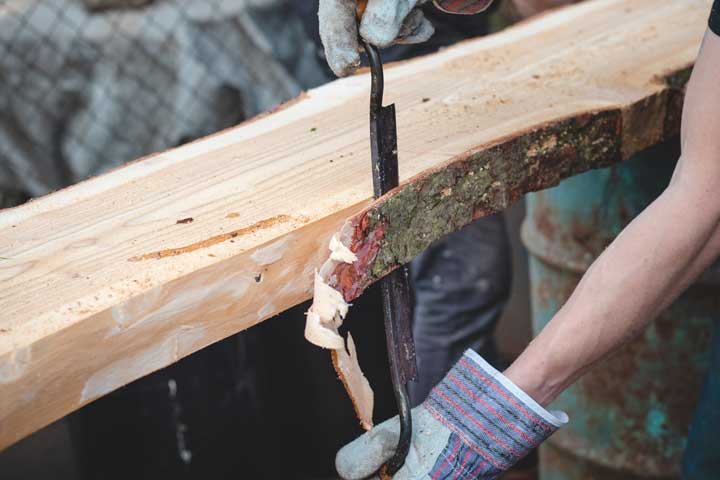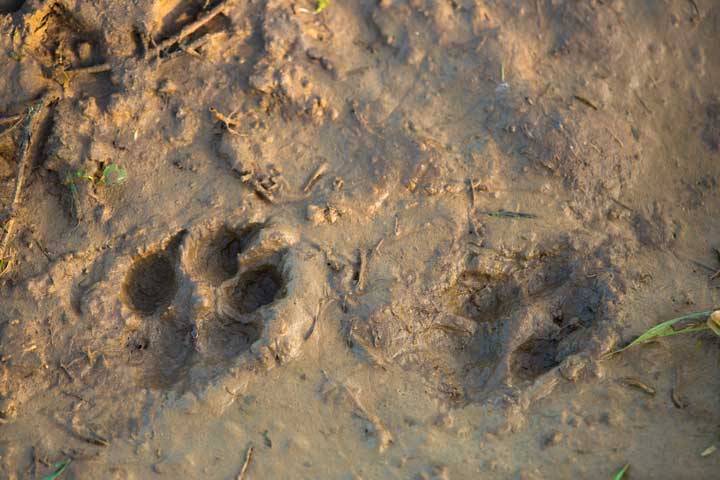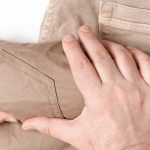Bushcraft, also known as wilderness survival or primitive living skills, is mainly done in remote areas. It is considered severe camping as it involves traditional techniques, comprehensive skills, and knowledge and, therefore, can be tasking the mind and the body.
Planks will help you navigate most places. Here is an outline of the steps you’ll use to make planks from bushcraft and the skills required to use them.
Process of Making Planks Using Bushcraft Techniques
Here are the steps involved in making planks using bushcraft techniques.
Step 1: Select a Suitable Tree
Finding a suitable tree is the first step in making planks. Look for a tree with straight, even-grained wood free of knots and defects. White oak, black locust, and hickory are all excellent choices for planks. Avoid using soft or spongy wood trees because they will not last as planks.
Step 2: Trim the Tree
Once you’ve found a suitable tree, you must cut it down. Depending on what you have on hand, you can use an ax or a saw to complete this task. To reduce waste, cut the tree as close to the base as possible.
Step 3: Cut the Log Into Rough Planks
After the tree gets felled, split it into rough planks. It can be accomplished with an ax or a maul. Begin by roughing out the dimensions of the planks you want to make on the log. Then, using an ax or maul, split the log along these lines.
Step 4: Plane the Rough Planks
After splitting the log into rough planks, you must plane them to make them smooth and even use a hand plane or a drawknife. Plane both sides of the plank to achieve an even thickness.

Step 5: Allow the Planks To Dry.
After the planks are planned, they must be dried before being used. You can accomplish this by stacking the planks in a dry, well-ventilated area for several weeks and allowing them to air dry. You can also use a solar kiln or a traditional kiln to speed up drying.
Step 6: Sand the Planks
After the planks have dried, sand them to remove any rough or uneven edges. You can use a belt sander or a hand sanding block for this task. Next, fill both sides of the plank until they are smooth.
Step 7: Complete the Planks
Finally, finish the planks to protect them from the elements and to improve their appearance. You can accomplish this by applying a wood oil or sealer to the planks. Follow the manufacturer’s instructions and apply several coats to ensure complete protection.
Skills Required for Bushcraft Camping
You may need some of these skills to make and use planks.
Shelter Construction
Knowing how to construct a shelter out of natural materials is critical for staying warm and dry in the wilderness. Bushcrafters do not travel with a standard tent; instead, they make shelters out of raw and existing materials.
Making and Maintaining a Fire
Making and maintaining a fire is essential for cooking food, providing warmth, and signaling for help. You should be familiar with fire-starting methods such as a fire starter, plow, or fire bow drill.
Water Finding and Purification
Knowing how to find and purify fresh water is critical for avoiding illness and dehydration. Some examples are using a water filter, boiling water, or water purification tablets.
Navigation
You must be able to navigate in off-grid situations and use a map and compass, as well as natural landmarks and the stars, to find your way in the wilderness.
Basic First Aid Skills
These are as simple as treating cuts and abrasions, administering CPR, and splinting fractures, can be lifesaving in an emergency. You should be prepared for anything when you’re out in the wilderness.
Food Procurement
This skill is critical for survival in the wilderness. You could go hunting, fishing, trapping, foraging, and cooking over an open fire.
Plant Identification
Knowing which plants are edible and poisonous can be critical in the wilderness for finding food and avoiding illness.
Animal Tracking
Identifying and tracking animals can help you find food and understand your local ecosystem.

Maintenance of Tools and Equipment
Maintaining and repairing your tools and equipment is essential for keeping them in good working order.
Knot Tying
Knowing how to tie different knots can help you secure your gear, build a shelter, and perform other tasks in the wilderness.
By mastering these skills, you will be better equipped to handle any challenges that may come up during a bushcraft camping trip.
Outro
Making your planks using bushcraft techniques can be a valuable and gratifying survival skill or a way to connect with nature and practice outdoor survival.
Start by picking a tree, cutting and dividing the log, planing and drying the planks, and sanding and finishing them. Building planks requires plant identification, knot tying, and first aid skills.
Frequently Asked Questions
Here are some commonly asked questions about bushcraft and how to make planks.
Why make planks using bushcraft techniques?
Creating tools and structures from whatever resources are available may be necessary for survival. Making your planks allows you to be creative while utilizing natural materials to meet your needs.
How does learning bushcraft techniques make you more self-sufficient?
Learning to make your planks allows you to become more self-sufficient and less dependent on modern materials and technologies.
Making planks is a practical and valuable way to practice bushcraft skills such as cutting, splitting, and shaping wood; making your planks can be a rewarding and enjoyable way to connect with nature while appreciating natural materials’ beauty and versatility.
Are bushcraft techniques sustainable?
Using natural materials to make tools and structures may be more environmentally friendly than synthetic materials, which may have a more significant environmental impact.
Can bushcraft plank techniques help save money?
Making your planks can be less expensive than purchasing ready-made planks, especially if you have access to free or low-cost natural materials.
Can learning bushcraft techniques help with personal fulfillment?
Making your planks can be a satisfying and fulfilling experience because you can transform raw materials into something valuable and functional. It can also be fun and rewarding to practice bushcraft skills and connect with nature.




